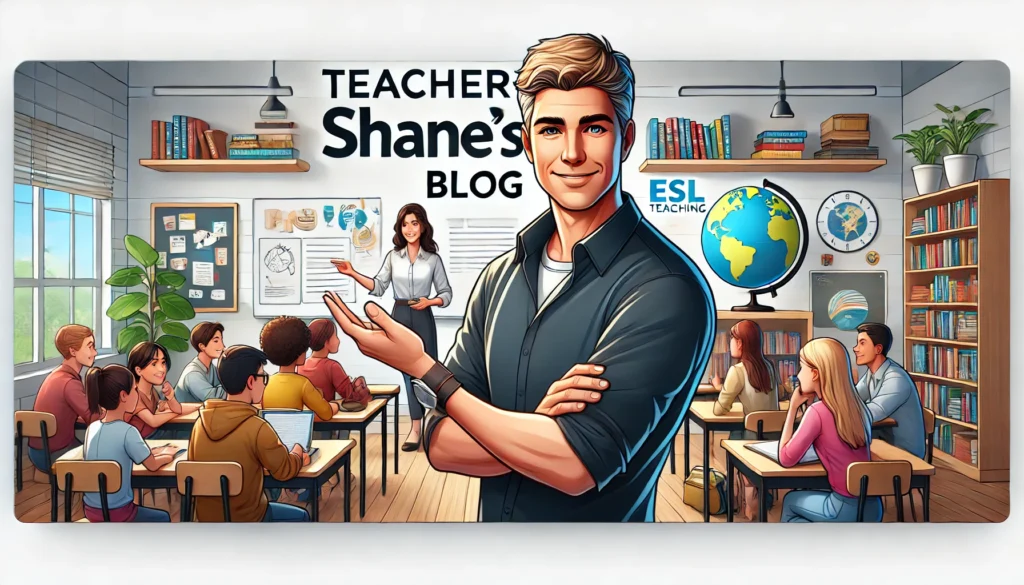Teaching English as a Second Language (ESL) online, especially to kids, requires a balance of structure, creativity, and adaptability. Over the years, I’ve learned that success in the virtual classroom comes down to much more than just knowing the language—it’s about delivering lessons that are engaging, flexible, and tailored to each student’s needs. Here’s what I believe makes a great online ESL teacher, and how you can create a well-rounded learning experience for your students.
1. Cultural Sensitivity—Understanding Your Students’ World
Teaching kids from different parts of the world means you have to be aware of their cultural contexts. A great online ESL teacher knows how to incorporate culturally relevant materials while making sure lessons are respectful of different backgrounds. This is particularly important for younger learners, who might not have as much exposure to diverse perspectives. Being culturally sensitive ensures that students feel comfortable and confident in the learning environment.
2. Clear Communication—Keeping It Simple and Effective
When you’re teaching kids online, you’ve got to be able to communicate in a way that’s clear and understandable. It’s not just about speaking English well; it’s about breaking down language concepts in a way that’s easy for young learners to grasp. I always make sure my explanations are simple and use lots of visual aids, gestures, and examples. With kids, especially beginners, clarity is everything. You want them to leave each lesson understanding something new and feeling like they’ve made progress.
3. Flexibility in Lessons—Adapt to Your Students’ Needs
One of the most important qualities of an effective online ESL teacher is the ability to adapt lessons to meet each student’s needs. Kids have different learning styles, and what works for one child may not work for another. Some might need more speaking practice, while others struggle with reading or grammar. That’s why your lesson plans need to be flexible. A well-rounded curriculum should cover all the core areas—reading, grammar, speaking, and listening—but you need to be ready to shift focus depending on where the student needs the most help.
For example, if a student is struggling with reading, I might spend more time on phonics and sight words before moving on to more advanced material. On the other hand, if a student is shy about speaking, I’ll create more opportunities for conversation during class to help them build confidence.
4. Well-Rounded Curriculum—Building All Language Skills
Speaking of a well-rounded approach, a good ESL teacher makes sure students are developing in all areas of language learning—reading, writing, listening, and speaking. Kids need a balanced curriculum that doesn’t just focus on one skill. A great lesson might include reading a short story, practicing some grammar, and finishing with a fun speaking activity to reinforce what they’ve learned. It’s about making sure they are progressing in all areas, not just focusing on one at the expense of the others.
I personally make sure every lesson I teach incorporates elements from each skill set. It’s essential to keep lessons varied and dynamic to hold kids’ attention and ensure their language development is well-rounded. If you’re not covering all the bases, they won’t get the comprehensive foundation they need to truly master English.
5. Tech-Savvy—Making the Most of Online Tools
Teaching ESL online means you’ve got to be comfortable with technology. Whether it’s using interactive games, digital whiteboards, or screen sharing, tech tools can really enhance your lessons. The key is to use these tools to support learning without letting them take over the lesson. Keep it simple, effective, and fun, and always have a backup plan in case tech glitches happen (and they do).
6. Patience and Positivity—A Little Encouragement Goes a Long Way
Teaching kids requires patience—sometimes a lot of it! It’s easy for students to get frustrated when they don’t understand something right away, especially when learning a new language. Keeping a positive attitude and offering plenty of encouragement can make a big difference in their confidence. I always celebrate the little wins, whether it’s getting through a difficult reading passage or mastering a tricky bit of grammar.
Kids learn better when they feel supported and valued, so as their teacher, it’s important to create an environment where they aren’t afraid to make mistakes. That’s where the real learning happens.
7. Creativity—Keeping Kids Engaged
You can’t teach kids without a bit of creativity. It’s important to keep things interesting, especially in the online environment where distractions are just a click away. This doesn’t mean you need to reinvent the wheel for every lesson, but small touches—like turning a grammar lesson into a simple game or using a favorite cartoon character in a reading exercise—can go a long way in keeping your students engaged. The key is to make lessons fun but still focused on learning goals.
8. Planning and Organization—Structured but Flexible
Having a plan is essential, but it’s equally important to know when to adjust it. Every lesson should have a clear structure with defined goals, but if your student is struggling with a particular area, don’t be afraid to spend more time on it. With kids, you can’t always predict how the lesson will go, so it’s important to be organized yet flexible. Planning keeps you on track, and flexibility ensures that the lesson is tailored to the student’s current needs.
A Curriculum You Can Rely On
If you’re like me and you want to ensure your lessons are always high-quality and flexible, I highly recommend using a well-structured curriculum. At SuperEnglishESL.com, I’ve developed a comprehensive ESL curriculum that’s specifically designed for teaching kids online. It covers all the essential areas—reading, grammar, speaking, and listening—and is flexible enough to adapt to each student’s unique needs. If you’re looking to simplify your planning while delivering well-rounded lessons, this curriculum has got you covered!
